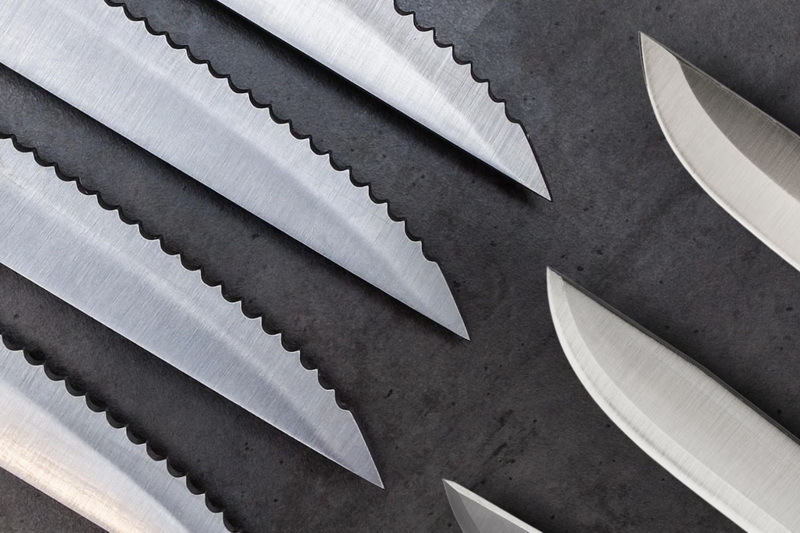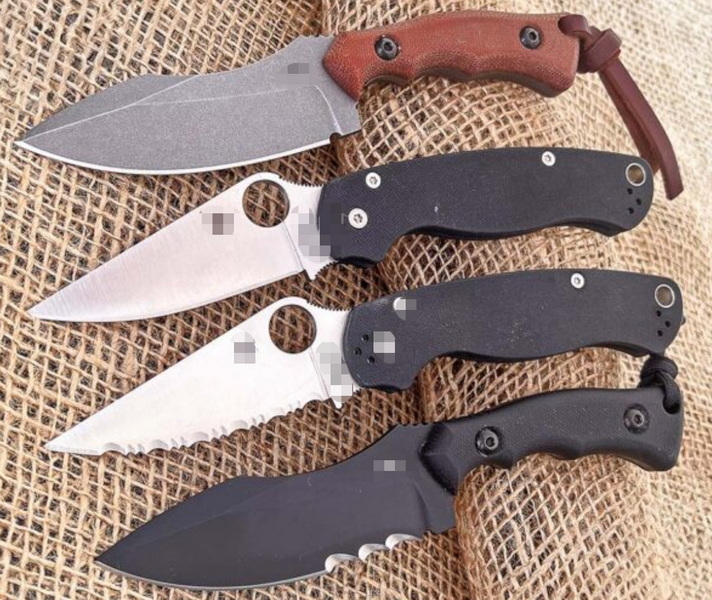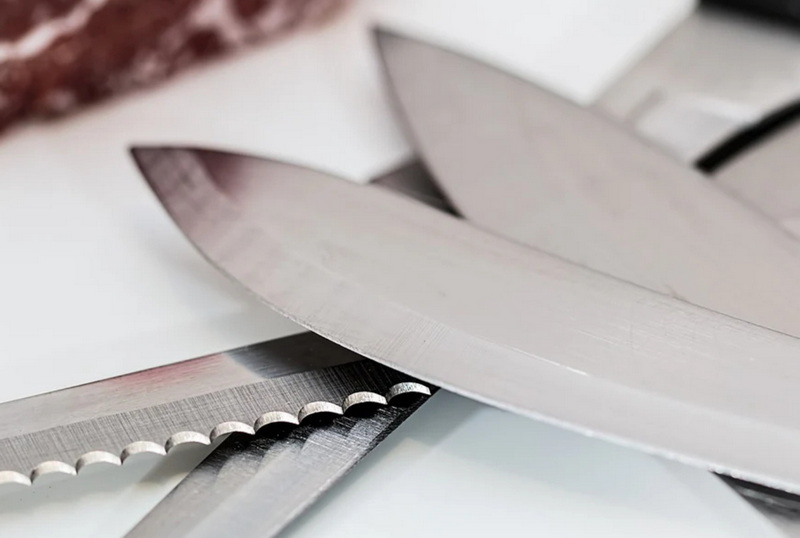- All
- Product Name
- Product Keyword
- Product Model
- Product Summary
- Product Description
- Multi Field Search
Views: 222 Author: Ann Publish Time: 2025-10-26 Origin: Site











Content Menu
● Straight Edge vs Serrated Edge: Core Differences
● Materials and Design Influence Edge Performance
● OEM Considerations: Translating Edge Choice into Market-Ready Solutions
● FAQ
>> Q1: Which Paring Knife edge type is best for a home cook-focused brand?
>> Q2: How should an OEM project decide between Straight Edge and Serrated Edge?
>> Q3: What maintenance considerations apply to both edge types?
>> Q4: Can a single Paring Knife combine both edge types?
>> Q5: How do material choices influence OEM success?
Paring Knife is one of the most versatile tools in any kitchen, and its edge type dramatically shapes precision, efficiency, and outcome. In an OEM context, choosing between Straight Edge and Serrated Edge is not merely a stylistic preference; it defines category performance, training requirements, packaging, and after-sales support for global brands. This article explores the practical differences, material and design considerations, maintenance routines, and the OEM pathways that enable brands to deliver a compelling Paring Knife portfolio to home cooks, professional kitchens, and international distributors.

A Paring Knife is typically a compact blade, commonly 3 to 4.5 inches in length, designed for precision work such as peeling, trimming, deseeding, and decorative cuts. The blade's geometry, steel type, and handle ergonomics all influence control and comfort during delicate tasks. In an OEM program, additional factors matter: process repeatability, supply chain stability, and the ability to customize edge profiles, bevels, and coatings to match target markets' preferences.
- Cutting Precision and Control
Straight Edge provides a continuous, smooth edge ideal for precise peeling, fine trimming, and creating clean, uniform cuts. Its predictability makes it the preferred choice for presentation-focused tasks where edges matter. Serrated Edge employs a saw-like tooth pattern that concentrates force at the tips of the teeth, enabling easier entry into tough skins and fibrous surfaces, which can translate to more forgiving cutting in some scenarios. The result is a trade-off between unbroken control versus rapid initial penetration.
- Food Types and Tasks
Straight Edge excels for delicate works—peeling soft fruits, trimming seeds, and performing intricate garnishes where a clean cut is essential. Serrated Edge shines with tomatoes, citrus peels, crusty fruits and vegetables, and other materials with tough exteriors and soft interiors where the teeth reduce slipping and maintain cutting efficiency over time. For OEM lines, a dual-offer approach can address both consumer segments without sacrificing production efficiency.
- Maintenance and Durability
Straight Edge knives require regular honing and periodic sharpening to preserve a fine edge, especially under high-precision use. Serrated Edge tends to retain its edge longer between sharpenings because teeth cut differently, but the teeth may require specialized sharpening to maintain tooth geometry. In an OEM program, providing clear maintenance guidance and optional professional sharpening partnerships can significantly improve lifetime value.[1][9]
- Safety and Handling
Straight Edge blades give tactile feedback that helps experienced users refine control but demand precise technique to prevent slip. Serrated Edge blades offer robust performance in demanding tasks but may challenge novice users to maintain consistent technique. Training materials should cover correct grip, cut paths, and safe handling for both edge types to minimize mishaps.

- Blade Materials
Stainless steels, carbon steels, and high-alloy steels each interact with edge geometry differently. Higher hardness steels may hold a Straight Edge longer but risk chipping if mishandled, while certain alloys maintain Serrated Edge effectiveness with lower maintenance in busy environments. OEM programs should align steel selection with intended market usage, cleaning practices, and warranty commitments.
- Handle Design and Balance
The ergonomics of the handle and the blade's balance point influence precision in small-detail work. OEM customization often includes grip texture, tang design, and overall weight distribution to optimize control for both edge styles. A well-balanced Paring Knife reduces hand fatigue during extended prep sessions.
- Finishes and Surface Treatments
Coatings and surface treatments influence corrosion resistance, stain resistance, and the ease of maintenance. While coatings can enhance longevity, they must be compatible with sharpening methods and food safety standards. OEM programs frequently partner with coating specialists to deliver brand-consistent aesthetics and performance.
- Brand Positioning and Market Segments
For premium markets, Straight Edge can be marketed as the tool for flawless presentation and high-precision work, supported by training materials that explain micro-slicing, garnish work, and fine-detail trimming. For value-focused channels, Serrated Edge can emphasize durability, reduced upkeep, and robust performance in front-line kitchens. An adaptable OEM strategy often blends both edge options under a unified brand family, with clear differentiation in product sheets and education assets.
- Costing, Production, and Lead Time
Edge geometry affects tooling complexity, processing steps, and yield. Straight Edge blades may require different grinding equipment and sharpening jigs than Serrated Edges. In an OEM scenario, presenting modular options—such as customizable edge profiles, interchangeable handles, and scalable packaging—helps manage cost while expanding market reach. Transparent total-cost-of-ownership (TCO) calculations support distributor and retailer negotiations.
- Samples, Iteration, and Time-to-Market
Rapid prototyping and fast iteration cycles are critical in OEM partnerships. Typical paths include offering single-edge configurations first, then introducing dual-edge variants or swappable components based on market feedback. Providing close cooperation on CAD drawings, material certifications, and QC test plans accelerates approvals and reduces rework.
- Packaging, Training, and After-Sales
Clear, multilingual training materials, consumer education sheets, and dealer-friendly packaging are essential to minimize post-sale support costs. OEM programs that bundle education content with product data sheets, maintenance guides, and visual assembly instructions tend to achieve higher channel trust and faster adoption.
Selecting the optimal Paring Knife edge type—Straight Edge or Serrated Edge—depends on target foods, required precision, maintenance capabilities, and the OEM strategy. Straight Edge shines in precision, clean cuts, and presentation-driven tasks, while Serrated Edge delivers durability and efficiency in high-volume environments. The most resilient OEM approach combines both edge configurations within a cohesive product family, supported by adaptable materials, modular handles, and comprehensive training and packaging assets. This approach reduces time-to-market, lowers training burdens, and broadens global adoption across North American, European, and Asian markets. OEM partners are encouraged to engage for customized solutions, sample programs, and scalable production plans tailored to diverse markets.

A1: A Straight Edge Paring Knife emphasizes precision for peeling and delicate trimming, paired with straightforward maintenance. Serrated Edge options can be included as a secondary line for bulk prep tasks if market research supports it.
A2: Assess the primary foods, consumer training capabilities, distribution channels, and available after-sales support. Often an integrated offering across both edges better serves a broad audience.
A3: Regular cleaning, thorough drying, and using edge-appropriate sharpening methods are essential. Straight Edges require flat honing, while Serrated Edges may need specialized gear to preserve tooth geometry.
A4: Hybrid designs exist but require careful engineering and clear user education to avoid performance trade-offs. Most OEM programs keep edges separate or use modular components.
A5: Material selection affects edge retention, corrosion resistance, and lifecycle costs. Align steel type and coatings with market expectations and care routines to maximize durability and customer satisfaction.
The Ultimate Professional Knives for Halal Butchery in Middle Eastern Kitchens
Chef Knife Size Guide: Choosing Between 6″, 8″, 10″, And 12″
Custom Knife Handles: How To Design A Chef Knife That Fits Your Hand Perfectly
Chef Knife Surface Treatments Guide: From Polished Migaki To Damascus Patterns
Inside Our Professional Knife Sample Room: Quality You Can See
Universal Knife Block Buying Guide: Modern Acrylic & ABS Knife Holders for Professional Kitchens
Universal Knife Block: The Complete Guide To Modern, Hygienic Knife Storage
The Complete Guide To Red Handle Knife Sets: Style Meets Functionality in The Kitchen
Professional Knives for Halal Butchery And Middle Eastern Cuisine